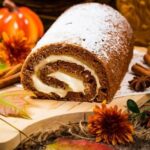Have you ever been excited to decorate a cake, only to be disappointed by the grainy and crystalized texture of your icing? Many bakers have experienced this frustrating problem when their cake decorating icing fails to achieve the smooth and creamy consistency they desire. In this article, we will delve into the reasons behind why cake decorating icing crystalizes and explore solutions to help you overcome this common obstacle.
Cake decorating is an art that relies heavily on the appearance and texture of the icing used to adorn cakes. A beautifully decorated cake can instantly bring joy and delight to any occasion. However, when the icing crystalizes, it can ruin both the visual appeal and taste of your creation. Understanding how and why icing crystalizes is vital for every baker who wants to create flawless decorations that are as delicious as they are visually stunning.
Crystalization in cake decorating icing is not a random occurrence; it is governed by chemical reactions that take place during the preparation process. Factors such as temperature, humidity, and specific ingredients play a crucial role in determining whether your icing will maintain its smoothness or transform into a gritty mess. By uncovering the science behind these chemical reactions, we can equip ourselves with knowledge that will help us avoid crystalization and achieve perfect results every time we decorate a cake.
Join us as we explore the various factors that contribute to icing crystalization, including certain ingredients known for promoting this problem. We will also discuss techniques for proper temperature control during icing preparation, methods for adjusting hydration levels, and even how acidic ingredients can prevent crystalization altogether. By understanding these key factors and implementing the tips provided in this article, you can master the art of creating flawlessly smooth cake decorating icing.
So let’s dive into the fascinating world of cake decorating chemistry and learn how to overcome one of its most common challenges-the dreaded crystalized cake decorating icing.
The Science Behind Crystalization in Icing
Crystalized cake decorating icing can be a frustrating problem for many bakers. Understanding the science behind the crystalization process can help bakers troubleshoot and prevent this issue. It all comes down to chemical reactions that occur within the icing.
When making icing, one of the main ingredients is sugar, which consists of small, individual sugar crystals. As the sugar dissolves into water or other liquids in the recipe, its molecules break apart and separate from each other. However, if there is an excess of sugar in the mixture or if certain conditions are present, such as low humidity or high temperatures, these dissolved sugar molecules can come back together and form larger crystals.
Temperature plays a significant role in the crystalization process. Cooler temperatures slow down molecular movement and allow more time for sugar molecules to join together and form crystals. On the other hand, higher temperatures speed up molecular movement and decrease the likelihood of crystal formation. This is why it is important to properly control the temperature when preparing icing.
Humidity also affects crystalization. When there is too little moisture in the air, any liquid in the icing will evaporate quickly, leaving behind concentrated sugar solution that promotes crystal growth. On the contrary, excessive humidity prevents evaporation and keeps the icing moist, preventing crystalization. Finding a balance between moisture levels is crucial for achieving smooth and creamy icing.
| Factors | Effect on Crystalization |
|---|---|
| Temperature | – Cooler temperatures increase crystal formation
|
| Humidity | – Low humidity leads to faster evaporation and concentrated sugar solution
|
| Excess sugar | – Too much sugar promotes crystal growth |
Understanding the science behind crystalization in icing can help bakers troubleshoot and prevent this issue. By properly controlling temperature and finding a balance in humidity levels, bakers can ensure that their icing remains smooth and creamy for cake decoration. In the next sections, we will delve deeper into how specific ingredients contribute to crystalization and explore techniques to prevent or reverse the formation of crystals in cake decorating icing.
Identifying the Culprits
When it comes to cake decorating icing, crystalization can be a common problem that many bakers face. What starts as a smooth and creamy icing can quickly turn into a gritty and grainy mess. Understanding the culprits behind crystalized icing is crucial in order to prevent this frustrating outcome and achieve the perfect texture for your cake decorations.
One of the main ingredients in icing recipes that tends to promote crystalization is granulated sugar. This type of sugar has larger crystals compared to powdered sugar, which makes it prone to crystallizing when mixed with other ingredients. Additionally, corn syrup is another culprit that contributes to the crystallization problem. Corn syrup contains glucose, which can form crystals when exposed to certain conditions.
The choice of flavorings can also impact the likelihood of icing crystalizing. Some flavorings contain alcohol or oils that can interfere with the sugar molecules, leading to crystal formation. It’s important to carefully select flavorings that are less likely to cause crystalization or consider alternative recipes that incorporate acids, such as lemon juice or cream of tartar.
To mitigate the risk of crystalized icing, it’s important to pay attention not only to the quantity and quality of these ingredients but also how they are incorporated into your recipe. Ensuring proper temperature control during preparation is crucial. If the ingredients are heated too quickly or cooled too slowly, it can lead to crystal formation.
The Art of Temperature Control
Temperature control is a crucial aspect of preventing the crystalization of cake decorating icing. When it comes to icing preparation, understanding how to properly heat and cool your ingredients can make all the difference in achieving that smooth and creamy consistency desired for cake decoration.
The Importance of Proper Heating
One of the primary causes of crystalization in icing is the improper heating of certain ingredients, such as sugar or corn syrup. To avoid crystalization, it is important to heat these ingredients slowly and evenly. Gradually heating them allows the molecules to dissolve properly and prevents the formation of unwanted crystals.
When heating sugar or corn syrup, it is recommended to use low heat and frequently stir the mixture. This ensures that the heat is distributed evenly, preventing any hot spots from forming which could lead to crystalization. Additionally, using a heavy-bottomed saucepan can help distribute heat more evenly and prevent scorching.
The Role of Proper Cooling
In addition to proper heating, cooling the icing mixture correctly is just as crucial in avoiding crystalization. When it comes time to cool your icing, be sure not to rush the process. Rapid cooling can shock the mixture and encourage sugar molecules to bond together, resulting in a grainy texture.
Allowing your icing mixture to cool slowly at room temperature is ideal for preventing crystalization. It is recommended to cover the bowl with a clean kitchen towel during this process to keep out any dust or debris that may affect consistency. Once cooled, you can then transfer the icing to an airtight container for storage or immediate use.
By paying careful attention to both heating and cooling techniques when preparing your cake decorating icing, you can significantly reduce the risk of crystalization and achieve a smooth and creamy consistency that will enhance your cake decorations.
The Hydration Mystery
Water is a crucial ingredient in cake decorating icing, playing a significant role in preventing crystalization. Understanding the hydration levels and their impact on icing consistency is essential for bakers looking to achieve smooth and creamy icing for their cake decorations.
One of the main reasons why icing crystalizes is an imbalance in hydration levels. If there isn’t enough moisture present, the sugar molecules in the icing will start to bind together and form crystals. On the other hand, if there is too much water, the icing can become overly thin and lose its stability.
To maintain the ideal hydration level, it’s important to follow a recipe carefully and measure the water accurately. If you find that your icing is too dry or crumbly, you may need to add more liquid to achieve the desired consistency. Similarly, if your icing is too runny or lacks structure, adding additional sugar or a thickening agent may be necessary.
Achieving the perfect hydration balance also depends on external factors such as temperature and humidity. In hot and dry climates, more water may evaporate from the icing, leading to quicker crystalization. It’s important to keep an eye on the consistency of your icing while working in different environmental conditions and make adjustments accordingly.
To adjust hydration levels effectively, bakers can utilize various techniques. Gradually adding small amounts of liquid at a time allows for better control over texture and prevents overhydration. Conversely, if you accidentally add too much liquid, you can thicken your icing by gradually incorporating powdered sugar until it reaches the desired consistency.
The Magic of Acidic Ingredients
When it comes to preventing crystalization in cake decorating icing, one solution lies in the magic of acidic ingredients. Acids such as lemon juice or cream of tartar can be incorporated into icing recipes to effectively hinder the crystalization process. In this section, we will unveil the effects of acidic ingredients on icing crystalization and provide alternative recipes or ingredient substitutions that incorporate acids.
Acidic ingredients work by lowering the pH level of the icing, thereby creating an environment where sugar molecules are less likely to form crystals. Lemon juice, for example, adds a subtle tanginess to icy with a high acid content that prevents sugar crystallization. Cream of tartar is another ingredient commonly used in baking that contains tartaric acid. This acid functions similarly by inhibiting crystal formation.
Incorporating acidic ingredients into your icing recipe not only helps prevent crystalization but also adds flavor complexity and balance. For those who prefer a more pronounced citrus taste, adding lemon zest alongside lemon juice can further enhance the acidity and prevent crystallization.
If you’re looking for alternative recipes or ingredient substitutions, there are options available for those without access to lemons or cream of tartar. Vinegar is another acidic ingredient that can be used as a substitute for lemon juice or cream of tartar in your frosting recipe. For a milder vinegar flavor, apple cider vinegar is an excellent option.
By understanding and utilizing the magic of acidic ingredients, bakers can prevent crystalization in their cake decorating icing while introducing new flavors and complexities to their creations. The use of acids provides a simple yet effective solution to this common problem faced by many bakers.
| Acidic Ingredient | Effects on Icing Crystalization | Recipe/Ingredient Substitution |
|---|---|---|
| Lemon Juice | Prevents sugar crystallization and adds tanginess | Can be substituted with vinegar or lemon zest |
| Cream of Tartar | Inhibits crystal formation and provides balance | Can be substituted with vinegar or lemon juice |
| Vinegar | Acts as an acid to prevent crystallization | Apple cider vinegar can be used for a milder flavor |
The Role of Humidity
Humidity is another crucial factor that can greatly impact the consistency of cake decorating icing. The moisture content in the environment plays a significant role in the crystalization process, making it important for bakers to understand how humidity affects icing and how to adjust accordingly.
Impact of Humidity on Icing Crystalization
When it comes to icing, high humidity levels in the environment can contribute to an increase in moisture absorption. This excess moisture can react with the sugar present in the icing, leading to crystalization. As a result, bakers may notice that their icing becomes grainy or develops a sandy texture due to these unwanted sugar crystals.
On the other hand, low humidity environments can cause rapid evaporation of moisture from the icing. This quick evaporation leads to drying out of the icing, making it difficult to work with and resulting in a cracked or rough appearance on cakes. Low humidity can also accelerate the crystalization process if there is insufficient water available for proper hydration.
Dealing with High or Low Humidity Environments
To ensure ideal consistency and avoid crystalized icing caused by high humidity, bakers should consider implementing certain measures. One effective strategy is to work in an air-conditioned room when possible, as cooler temperatures help control humidity levels by reducing moisture in the air.
Additionally, using a dehumidifier or placing bowls of uncooked rice around your workspace can help absorb excess moisture from the environment. It’s important to cover your bowls or containers of unused icing with plastic wrap during breaks or while working on other parts of your cake decoration project, as this helps prevent exposure to humid air.
Conversely, if you are working in a low humidity environment that promotes overly-drying icing, consider using a small humidifier near your workspace. This will add some moisture back into the surrounding air and help maintain sufficient hydration levels for your frosting.
By understanding how humidity affects icing consistency and employing appropriate measures to combat the challenges of high or low humidity environments, bakers can ensure that their cake decorating icing remains smooth and crystal-free.
Troubleshooting Tips
When your cake decorating icing crystallizes, it can be frustrating and disappointing. However, there are steps you can take to rescue the icing and prevent future mishaps. In this section, we will provide you with some troubleshooting tips that will help you salvage crystalized icing and achieve the desired consistency for your cake decorations.
If you find that your icing has already crystallized, one method to rescue it is by adding a small amount of liquid. You can try adding a teaspoon of hot water or milk at a time and gently stir until the crystals dissolve.
Be cautious not to add too much liquid at once, as it may cause the icing to become runny. If the crystals do not dissolve completely, you can strain the icing through a fine-mesh sieve to remove any remaining lumps.
Another technique for rescuing crystalized icing is to reheat it gently. Place the icing in a heatproof bowl over a pot of simmering water. Stir occasionally until the crystals dissolve and the icing becomes smooth again. Be sure not to overheat the icing or bring it to a boil, as this may alter its texture or consistency.
To prevent future mishaps with crystalized icing, proper storage is essential. Make sure to store your icing in an airtight container at room temperature or in the refrigerator if it contains perishable ingredients like milk or buttercream. Additionally, avoid exposing the stored icing to extreme temperatures or fluctuations in temperature, as this can promote crystalization.
Furthermore, paying attention to ingredient ratios can also help prevent crystalization in your icing. Ensure that you are following recipes accurately and using proper measurements for each ingredient. Some recipes may suggest using alternative sweeteners like confectioners’ sugar or corn syrup instead of granulated sugar, which may reduce the risk of crystalization.
By utilizing these troubleshooting tips and being mindful of storage and ingredient ratios, you can rescue crystalized icing and prevent future mishaps. Remember, practice makes perfect, so don’t be discouraged if you encounter crystalization along the way. With time and experience, you will become an expert in achieving flawless icing for your cake decorations.
Conclusion
In conclusion, mastering the art of crystal-free cake decorating icing is crucial for achieving the desired smooth and creamy consistency that is essential for beautiful cake decorations. Throughout this article, we have explored the problem of icing crystallization and uncovered the science behind it.
We have identified the main culprits in promoting crystalized icing and discussed the importance of temperature control during preparation. Additionally, we have delved into the role of water and acidic ingredients in preventing crystalization, as well as examined how humidity levels affect icing consistency.
To avoid crystalization, it is important to choose ingredients wisely and understand their properties. Avoid using granulated sugar in large quantities as it tends to promote crystal formation. Corn syrup can also contribute to crystallization, so it may be beneficial to use alternative sweeteners or adjust quantities accordingly. Furthermore, incorporating acidic ingredients such as lemon juice or cream of tartar can help prevent crystalization by lowering pH levels.
Proper temperature control is key when preparing icing. Heating ingredients too quickly can lead to crystallization, so it is important to be patient and heat gradually when necessary. Cooling icing down rapidly after heating can also result in crystal formation, so allowing it to cool naturally at room temperature is recommended.
Lastly, maintaining hydration levels in the ideal range is crucial for preventing crystalized icing. Adjusting water quantities or incorporating additional liquid ingredients such as milk or heavy cream can help achieve optimal hydration and ensure a smooth consistency.
Frequently Asked Questions
How do you keep icing from crumbling on a cake?
To prevent icing from crumbling on a cake, there are a few techniques you can employ. First, make sure that your cake has cooled completely before applying the icing. If the cake is still warm, it can cause the icing to melt and become unstable. Secondly, it is important to properly prepare and beat the icing mixture.
Ensure that you have followed the recipe instructions accurately and have achieved the right consistency for your icing. Adding additional liquid or adjusting the amount of sugar as needed can help with stability. Lastly, consider using a crumb coat before applying your final layer of icing. This thin layer of frosting will catch any loose crumbs and create a smooth surface for your final coating, preventing any potential crumbling.
How do you dissolve powdered sugar in frosting?
Dissolving powdered sugar in frosting requires incorporating it gradually while slowly adding liquid ingredients such as milk or heavy cream. Start by sifting powdered sugar to eliminate any clumps and achieve a smoother texture in your frosting. In a large bowl, begin mixing the softened butter or shortening until creamy and fluffy.
Slowly add small amounts of powdered sugar while continually beating the mixture at medium speed until fully combined. As you add each portion of powdered sugar, simultaneously incorporate a small amount of liquid to help dissolve it effectively without resulting in lumps. By diligently incorporating powdered sugar step-by-step alongside liquids into your frosting recipe, you can achieve a smooth consistency.
How do you make smooth icing?
To achieve smooth icing, certain techniques can be employed during its preparation and application process. Firstly, ensure that all ingredients are at room temperature before starting to mix them together; this ensures proper blending and prevents lumps from forming in your icing mixture which could hinder smoothness later on. Secondly, when combining ingredients such as butter or shortening with powdered sugar, gradually add them while continuously mixing at low speed until well incorporated; this will yield a smoother consistency overall. Once mixed thoroughly, increase your mixer’s speed gradually to whip more air into the mixture, enhancing the smoothness and creating a lighter finish.
Lastly, when applying the icing to your cake, use a spatula or an offset spatula for even spreading – starting from the top and moving towards the sides until you achieve a smooth and consistent surface. Be patient while smoothing out any imperfections by carefully rotating your cake stand or revolving plate while continuing to spread the icing. This attention to detail throughout each step of preparation and application will contribute to a satisfyingly smooth icing.

Welcome to our cake decorating blog! My name is Destiny Flores, and I am the proud owner of a cake decorating business named Cake Karma. Our mission is to provide delicious, beautiful cakes for all occasions. We specialize in creating custom cakes that are tailored specifically to each customer’s individual needs and tastes.





